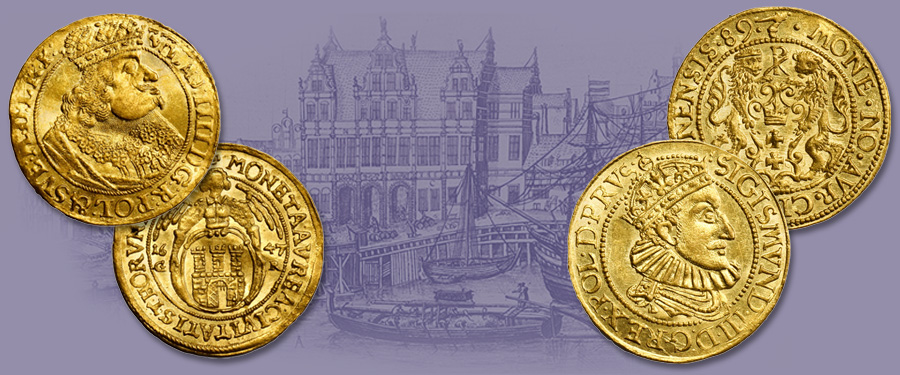
Among the most desirable and collectable of all world gold coins are the gold issues from the Polish-Lithuanian Commonwealth. At the January New York International Numismatic Convention auction, Stack’s Bowers Galleries is pleased to offer several important gold Ducat pieces from the Polish-Lithuanian Commonwealth. Also featured in the sale are a spectacular 1621 80 Ducats, a 1592 7 Ducats, and a 1595 10 Ducats, making this selection of Polish gold among the finest groups ever offered at public auction.
At its height, the Polish-Lithuanian Commonwealth, or more properly, the Kingdom of Poland and the Grand Duchy of Lithuania was a massive state in terms of both land and population. Officially established in July 1569 by the Union of Lublin, the Polish-Lithuanian Commonwealth immediately became a prominent European power, a position it retained for nearly two centuries. The Commonwealth operated under a unique political structure for the time, and the monarch was restricted from unlimited power. Additionally, for much of the existence of the Commonwealth, religious toleration was greater than elsewhere in Europe.
Despite the at times progressive nature of the Commonwealth, its zenith in influence came under the reign of Sigismund III, a ruler with a complex and mixed legacy. Sigismund III was neither tolerant nor democratic, often ruling despotically and instituting a program of harsh counterreformation, designed to curb the growing influence of Protestantism in the region. Conversely, he is also remembered for his ability to hold together a vast kingdom and maintain strength against his powerful neighbors of Sweden, Prussia, and the new Russia under Peter the Great. Sigismund III is also remembered for magnificent gold coinage and medals he produced, some of which are the most valuable coins ever produced, most notably the 1621 100 Ducats. After the death of Sigismund III, the Commonwealth entered a period of protracted decline. Constant fighting with Sweden ate away at the Commonwealth’s territory and influence. Coupled with the disastrous Thirty Years War, Poland was tremendously weakened militarily and by ineffective leadership. By the end of the 18th century, Poland was increasingly relegated to a minor power compared to Prussia and Russia, who in 1795 absorbed the Commonwealth. Ultimately the territories of Poland and Lithuania did not reemerge as nations until 1918 after the First World War.
An interesting facet of the Polish-Lithuanian Commonwealth was the existence of quasi-independent city states that maintained a level of political autonomy. The city of Thorn adopted Protestantism in a majority Catholic country, and their somewhat distinct nature led to issuance of coinage specifically for Thorn. In the January 2022 NYINC auction there is a stunning Ducat of this type from 1647. The free city of Danzig also minted their own coinage, and among many examples that will be offered in New York, is an exceptionally attractive Ducat graded MS-63 by PCGS. Both these pieces are part of a splendid group of amazing Polish coins that are sure to generate great excitement.
To view our upcoming auction schedule and future offerings, please visit StacksBowers.com. We are always seeking coins, medals, and paper money for our future auctions, and are currently accepting submissions for our Spring 2022 Hong Kong auction. Additionally, we are accepting submissions for our Collectors Choice Online (CCO) auctions, the next of which will be in February. If you would like to learn more about consigning, whether a singular item or an entire collection, please contact one of our consignment directors or info@stacksbowers.com today and we will assist you in achieving the best possible return on your material.





